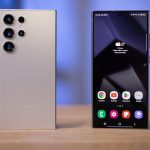Far away from the hustle and bustle of the Jacob K. Javits Convention Center where New York Comic Con is typically held, Square-Enix invited us and a select number of media/influencers to go hands-on with three of their upcoming RPGs. The first one I played that made up the majority of my session was Crisis Core: Final Fantasy VII, a full remake of the PSP exclusive that was first released in 2008 for the West (and only less than a year prior in Japan).
Crisis Core: Final Fantasy VII Reunion centers alongside a lifelong friend of Cloud Strife and an ancillary friend to several key players across all of Final Fantasy VII, Zack Fair. While already an action RPG spinoff that played quite differently from its namesake, Crisis Core’s upcoming Reunion remake enhances that action combat to be more in line with Final Fantasy VII Remake’s newer designs while retaining some of what made the original Crisis Core so unique: the DMW slot system.
DMW, or Digital Mind Wave, was a unique mechanic to Crisis Core: Final Fantasy VII core combat. As Zack Fair befriended those around him and created a strong mental bond between them, those feelings could be materialized within the reels that make up the DMW slot machine. The DMW slots act relatively independently from Zack in combat and are constantly spinning away while Zack hacks away with his oversized Buster Sword. However, the DMW is much less obtrusive in the remake to the point where it is no longer the sore spot that it once was in the original PSP release. Hitting a jackpot doesn’t stop the action in most instances, instead quietly spinning away in the top left corner of the screen where achieving a character buff merely pops up as an on-screen notification rather than the fullscreen takeover it once was. Skills and powerful attacks that can be rewarded as three-of-a-kind rolls are instead saved into Zack’s attack palette and can be unleashed on demand by a simple press of the triangle button. On top of that, skill cutscenes can be skipped if you’re tired of seeing the same attack animations play out time and time again.
Whether you’re wielding the Buster Sword as Cloud in Final Fantasy VII Remake or Zack in Crisis Core, the combat takes a surprisingly similar approach when it comes to the action. The DMW constantly hangs in the top left corner of the UI while Zack’s HP, MP, and AP populate in the bottom left. The bottom right window dynamically changes between the items slotted into his quick-use menu (potions, ethers, and the like) or switches into his Materia slots when L1 is held down. Zack can slot in up to four materia at a given time as well as two accessory slots. When the final boss of our gameplay demo is Ifrit, you better believe a Fire Amulet and Blizzard Blade are both required selections. While MP and AP are somewhat limited by the amount of restorative items you can bring along, the slots have a distinctive ability to activate a No AP Cost buff at the perfect time. Zack might not be able to jump to avoid getting smacked, but he does have the ability to block the brunt of the attack with his oversized hunk of metal or simply dodge roll away. Ifrit’s fire bolts have somewhat of an innate tracking quality to them, but a neatly timed dodge roll can avoid taking the heat.
Crisis Core: Final Fantasy VII Reunion features both an English and Japanese dub track, both of which fit Zack, Yuffie, and the few other characters that make a guest appearance in the brief preview period. The facial animations more closely match the original Japanese dub, although there’s a strange uncanniness to seeing the characters speak as their lips never quite seem to touch, Zack in particular.
While my demo was primarily centered around the PlayStation 5 version, I did have the opportunity to play through the same content a second time on a Nintendo Switch in handheld mode. Other action games might have to make compromises to get running at a steady framerate on Nintendo’s hybrid console, but I was more than a little surprised to see how smooth everything was running in my hands. Save for some aliasing that was worse than its PlayStation counterpart and reduced rendering/detail to hair textures, Crisis Core ran just as well in my hands with a similarly impressive framerate to match.
Even comparing to Dragon Quest Treasures, which was my third and final title to preview with Square Enix, the difference was night and day, and I believe that fans who have been waiting for another Final Fantasy title to arrive on the Nintendo Switch will have something to look forward unwrapping under the Christmas tree when Crisis Core: Final Fantasy VII Reunion arrives December 13th. Of course, the game will also be available on PC (Steam), PlayStation 4, Xbox One, and Xbox Series S|X.
The post Crisis Core: Final Fantasy VII Reunion NYCC Hands-On Preview by Kai Powell appeared first on Wccftech.






